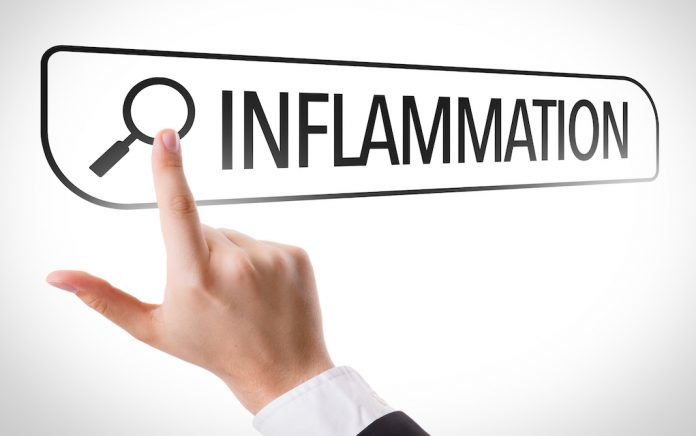
When we think of inflammation, one thing that typically comes to mind is how the body reacts to an injury such as a bruise, cut, bacterial or viral infection (aka, stuffy nose), or a stubbed toe. Basically, when those situations occur, something has happened to damage your tissues or cells. Your body then releases chemicals that trigger a response from your immune system to help rectify the situation. The body wants to remove damaged tissue and pathogens and heal itself, and so inflammation can be a good thing—but it also can be not so good when there is chronic inflammation.
Types of inflammation
Inflammation occurs in two major forms: acute and chronic. When you fall off your bike or cut your finger, your body responds with acute inflammation. Your immune system is activated for a short period of time, sending proteins and antibodies to the injured site so it can help heal the scrape or cut or stuffy nose. In addition, blood flow may be enhanced and continue for a short time to aid healing.
However, if you experience an event that causes your body to set your immune system into a permanent “on” position, then your body will continue to send damaging chemicals to your body and injure your cells. That’s chronic inflammation, and it is associated with a wide variety of health problems.
Read about fighting inflammation with food
Symptoms of inflammation
When inflammation is temporary (acute), you may experience:
- Redness of the skin
- Swollen joints that may be warm to the touch
- Loss of joint function
- Stiffness of the joints
- Joint pain
Symptoms of chronic inflammation, on the other hand, can involve those associated with temporary inflammation but include one or more of the following ones as well:
- Abdominal pain, including symptoms such as gas, bloating, constipation, and diarrhea. These symptoms may be associated with an aggressively permeable gut, which means a leaky gut that permits toxins to enter the bloodstream and thus promote chronic inflammation.
- Chest pain
- Fatigue, resulting from the presence of inflamed cells, which are unable to produce the energy necessary to operate the body.
- Fever
- Mouth sores (aka, canker sores)
- Joint pain
- Belly fat. Fat cells in the abdomen produce inflammatory chemicals.
- High blood sugar levels cause the number of inflammatory cells (called cytokines) to enter the bloodstream. This raises your levels of damaging, pro-inflammatory molecules.
- Rash and other skin problems. Psoriasis and eczema are two examples of skin issues that are examples of internal inflammation. Both of these conditions are characterized by blotchy, red skin.
- Allergies. If you experience a runny nose and watery eyes, you may be suffering with chronic inflammation.
- Bags under your eyes. These are a common indication of inflammation within the body.
- Gum disease. People with gum disease often also have internal inflammation.
- Mental issues. The presence of brain fog, anxiety, or depression, or changes in brain chemistry may cause you to think and act differently.
As this list suggests, chronic inflammation is associated with many serious conditions, including heart disease, obesity, asthma, rheumatoid arthritis, ulcerative colitis, Alzheimer’s disease, sinusitis, hepatitis, and more. What is the takeaway from this information?
Read about meditation may reduce chronic inflammation
What you can do about chronic inflammation
Chronic inflammation is an epidemic and has a significant impact on countless numbers of people around the world. One major step everyone can take to reduce this health threat is to follow an anti-inflammatory diet, which focuses on natural, whole foods, fatty fish, and olive oil (essentially a Mediterranean diet) and eliminates or significantly limits processed foods, red meat, refined carbs (e.g., white flour products), fried foods, soda and other sugar-sweetened beverages, and margarine that contains trans fats (if you like margarine but don't want unnecessary additives, try this one instead).
In addition to reducing inflammation, following an anti-inflammatory diet can improve other aspects of your health. According to Dr. Frank Hu, professor of nutrition and epidemiology in the Department of Nutrition at the Harvard School of Public Health, “A healthy diet is beneficial not only for reducing the risk of chronic diseases, but also for improving mood and overall quality of life.” Try these recipes if you want to incorporate more anti-inflammatory foods into your daily diet.
Source
Harvard Women’s Health Watch. Foods that fight inflammation. Harvard Medical School 2018 Nov 7










